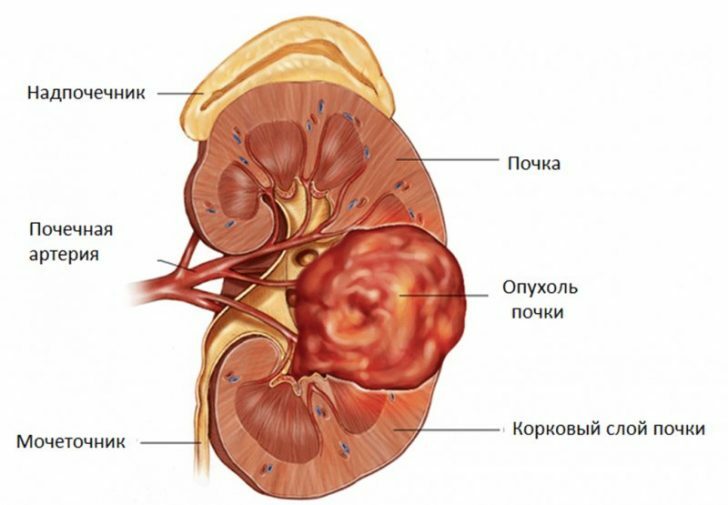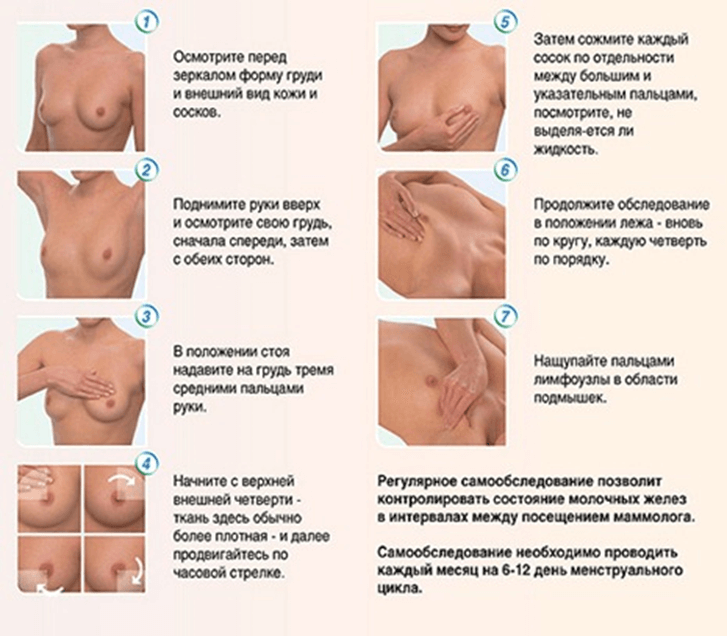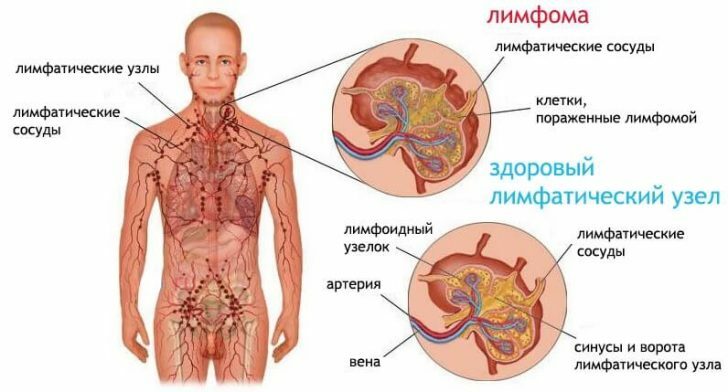Papillary thyroid cancer: causes, operation, prognosis
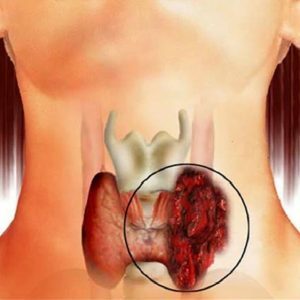
On papillary thyroid cancer account for up to 70% of cases of cancer of this body.With timely diagnosis, doctors give a favorable prognosis, meanwhile, after the diagnosis is made, it is necessary to start treatment without delay.It is reduced to the operation and the use of postoperative therapy with the use of hormones, radioactive iodine.
Table of Contents: General Information Causes Symptoms Classification Diagnosis Treatment of Papillary Thyroid Cancer, Operation Prognosis for Papillary Thyroid Cancer PreventionGeneral Information
Papillary cancer is one of the most common oncological processes in the thyroid gland.First of all, it is indicated by a small node, which normally does not bring discomfort to .Subsequently, there are difficulties with swallowing and breathing, meanwhile, due to the slow growth of the neoplasm and infrequent metastasis, the changes do not appear immediately.
Please note! In 30 - 60% of cases, metastases are possible in regional lymph nodes.
People at all ages are at risk, including children, although statistically the thyroid glands most often suffer from papillary cancer at the age of 30-50.And patients of women with such a diagnosis are 2 times more than men.
Cancer develops from the cells of the gland.In most cases, physicians find a single dense node, although there are also multiple nodes.Their sizes sometimes reach 5 - 7 cm, and they themselves differ in papillary structure.They do not have a capsule, but a subsequent examination reveals a structure that resembles branching stems.They are based on cells of connective tissue, and they themselves are lined with epithelium with large nuclei.
In some stems, signs of atrophy are observed in epithelial cells.Scars are sometimes diagnosed at the center of the neoplasm, at the same time it is not hormone-active itself.
The favorable outcome of treatment and the slow course contributed to the fact that this type of cancer was called "peaceful", meanwhile doctors emphasize that in children it proceeds in a more aggressive form, affecting neighboring organs.
Causes of
Causes of development of neoplasms have not yet been detected.It is known only that most often it is the result of somatic mutations.Sometimes there are genetic abnormalities when there is a gene that provokes the disease.
At the same time, factors that increase the risk of developing papillary cancer are mentioned, namely:
-
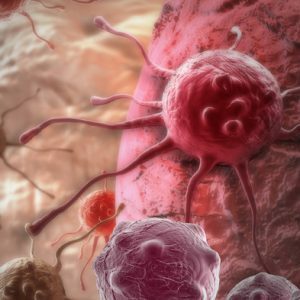 benign tumors of the thyroid gland, ovaries, mammary glands, that is, organs responsible for the synthesis of hormones;
benign tumors of the thyroid gland, ovaries, mammary glands, that is, organs responsible for the synthesis of hormones; - ongoing inflammatory processes;
- Radiation therapy;
- depression, stressful situation;
- accommodation in areas with an unfavorable ecological situation;
- deficiency of iodine in the body;
- conditions that led to hormonal changes, for example, pregnancy or menopause;
- bad habits - they reduce the protective function of the body.
Please note! Papillary cancer can develop from adenoma or multinodular goiter, that is, benign neoplasms.In rare cases, it can be the result of metastasis from other organs.
Symptoms
 With papillary thyroid cancer, the symptomatology is not expressed, which complicates its timely diagnosis. Often patients come to the reception, discovering a small knot around their neck.In other cases, a suspicion of oncology develops when a routine examination is made by an endocrinologist who notes a rapid change in the size and structure of the goiter or adenoma.
With papillary thyroid cancer, the symptomatology is not expressed, which complicates its timely diagnosis. Often patients come to the reception, discovering a small knot around their neck.In other cases, a suspicion of oncology develops when a routine examination is made by an endocrinologist who notes a rapid change in the size and structure of the goiter or adenoma.
Cancer is localized, usually in the lower part of one of the lobes of the gland, less often it is found in the isthmus zone, then it simultaneously affects both lobes.
Important! At an early stage, the tumor has a dense structure and a smooth or slightly bumpy surface.She moves herself, but becomes motionless as she grows.At this time there is a squeezing of neighboring organs, provoking difficulties with swallowing, shortness of breath, changes in voice and perspiration in the throat.
Later, lymph nodes increase, the subcutaneous veins widen, and the neck begins to deform.There is soreness in the affected area, a cough.
In the later stages, when the esophagus with the trachea is squeezed, the person's voice changes.He himself feels bad, loses his appetite and, as a result, the weight of .He may have fever, chronic fatigue, permanent weakness.At this stage, metastasis is possible in the bones, lungs.
Classification
Depending on the degree of the development of the disease, the following are distinguished:
-
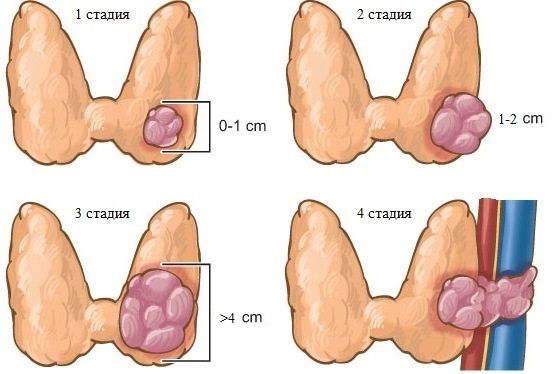
I stage - it is characterized by the presence of a nodule up to 2 cm in diameter without metastases and the risk to go beyond the capsule of the thyroid gland. As a result, cancer is successfully treated, but difficult to diagnose. - II stage - at this stage the node grows up to 4 cm, although it does not go beyond the thyroid gland.Due to its size, it is well probed, creating discomfort in the throat. Metastases are not observed, and treatment in 95% of cases ends favorably.
- III stage - it is diagnosed when the size of the lesion exceeds 4 cm. In this case, it extends beyond the thyroid gland, squeezing the surrounding organs.As a result, dyspnea, hoarseness and pain in the area of the lesion appear. In this case, the patient's condition worsens, as metastasis and enlarged lymph nodes are noted.
- IV stage - it is characterized by an increase in the size of the neoplasm, as a result of which the thyroid gland deforms. At the same time, metastases are found in neighboring organs and tissues.To the existing signs are added new ones, which are determined by the condition of the affected organs.
Diagnostics
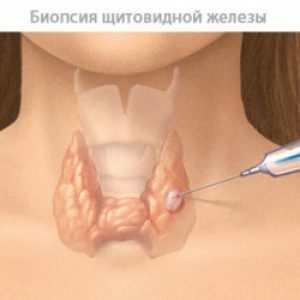 On consultation, the endocrinologist collects an anamnesis, and also probes the thyroid gland, visually examines the neck.As a rule, in this case, carcinomas with a diameter of 1 cm are detected.Subsequently, laryngoscopy is performed, which allows to assess the condition of the vocal cords and throat.Any found pathologies, nodules, or changes in the area of lymph nodes are the reason for ultrasound.This method helps to reveal the structure, contours and localization of tumors.
On consultation, the endocrinologist collects an anamnesis, and also probes the thyroid gland, visually examines the neck.As a rule, in this case, carcinomas with a diameter of 1 cm are detected.Subsequently, laryngoscopy is performed, which allows to assess the condition of the vocal cords and throat.Any found pathologies, nodules, or changes in the area of lymph nodes are the reason for ultrasound.This method helps to reveal the structure, contours and localization of tumors.
If suspicion of papillary cancer is carried out radioisotope scanning, which uses radioactive iodine and special equipment.Magnetic resonance and computed tomography allow us to trace the development of carcinoma.
Please note! All these studies provide an opportunity to detect the presence of neoplasm, but to verify its malignant nature can only be after a fine needle aspiration biopsy.This is a method of investigation, in which the needle is injected into the thyroid cavity to take its damaged tissues for analysis.The process is controlled by using an ultrasound machine.
If results from a thin needle biopsy are questioned, an open biopsy is performed.In this case, surgical intervention is performed, in which the doctor takes on the analysis of the tissue of the neoplasm.
In addition, the patient is assigned:
- blood test for oncomarkers;
- blood test for hormones that are secreted by the thyroid gland - thyroxine, thyrotropic, parathyroid, triiodothyronine.
- laryngoscopy - it allows to estimate the prevalence of primary neoplasm.
If necessary, an X-ray of the esophagus is performed using a contrast agent, bronchoscopy to assess the degree of narrowing of the esophagus.If metastasis is suspected, scintigraphy of the bones of the skeleton, computed tomography of the thorax, x-ray.
Treatment of papillary thyroid cancer, operation
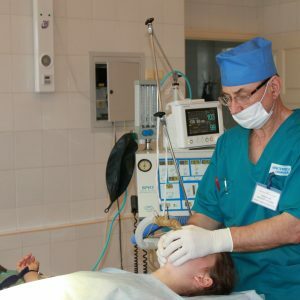 Treatment of papillary cancer is reduced to the operation.In most cases, complete thyroidectomy is performed, when the thyroid gland is completely removed. In addition, they can excise affected lymph nodes and regional tissues to reduce the risk of relapse.
Treatment of papillary cancer is reduced to the operation.In most cases, complete thyroidectomy is performed, when the thyroid gland is completely removed. In addition, they can excise affected lymph nodes and regional tissues to reduce the risk of relapse.
At a small tumor size( up to 1 cm in diameter) partial thyrotectomy is shown when the doctor removes only the isthmus and the affected area of the gland.The advantage of this method of resection is to minimize the risk of injury, and the disadvantage is that it is possible to miss some unhealthy cells.
Please note! By the time the operation takes 1 - 3 hours, and the rehabilitation does not exceed 3 days.
After complete removal of the organ, substitution therapy is prescribed, which is reduced to the intake of synthetic or animal hormones produced by the thyroid gland .They are necessary for the body to function properly.Such therapy is also performed after partial removal of the thyroid gland, meanwhile before its appointment, blood is taken for analysis to determine the actual level of its own hormones and the required dose of synthetic ones.
After the operation, patients are advised to regularly monitor .After a month and a half, a scan with radioactive iodine is performed to confirm or exclude the presence of residual cancer cells or metastasis.
After 6 months, designate:
- ultrasound;
- analysis for oncomarkers;
- analysis for hormones.
Subsequently, such procedures will need to be carried out every six months, and every 3 years to perform a full body scan.Thus, it will be possible to identify a relapse in time and help the patient.
Prognosis for papillary thyroid cancer
After the operation, doctors give a favorable prognosis.In the absence of distant metastasis, patients manage to survive from 5 to 15 years of .Despite the fact that metastases to the lungs and bones worsen the situation, in most cases it is possible to achieve a long-term remission. Fatalities of patients under the age of 50 years are single, and are usually the result of a recurrence of the primary neoplasm.
Important! Relapses usually occur within the first 18 months of therapy.
Prevention
Due to the fact that the exact causes of the disease have not yet been established, doctors do not identify specific preventive measures.Nevertheless, they emphasize that the risk of oncology is reduced:
- in the absence of irradiation of the neck and scalp, including during radiography;
- , provided that they live in areas remote from nuclear power plants or other objects that degrade the ecological situation.
They also recommend that they regularly undergo an examination with an endocrinologist, donate blood to hormones, do ultrasound of internal organs.
Papillary thyroid cancer is a disease that is difficult to diagnose, but if untreated, it can cause death.Prevent the worst possible routine examination from specialists, regular surveys.
Chumachenko Olga, medical reviewer

